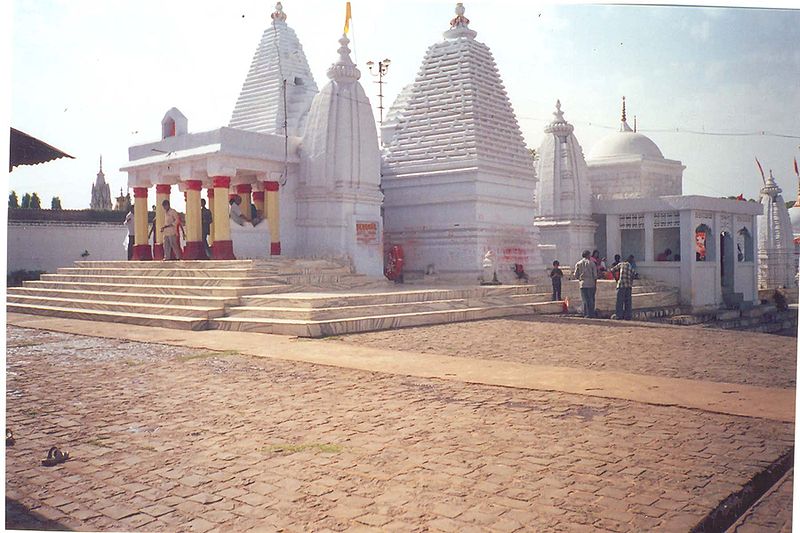
................................................................................................................................................................................................................................................................................................................................................................................................................................................................................................................

Copyright © visitindia.org.in. All Rights Reserved.
The historical importance of Amarkantak has emerged as the place of origin of two rivers – Narmada River and Sone River. Johila River also emerges from Amarkantak. The town has been mentioned in the Puranas, Ramayana, Mahabharata, Vashishtha Samhita and Shatapatha Brahmana. Amarkantak is a Sanskrit word which literary means immortal (amar) obstruction (kantak). As per Hindu mythology Amarkantak was an abode of the Gods but was disturbed by the hindrance of Rudraganas and hence called Amarkantak. The poet Kalidas named it Amrakoot as the myth states that the dense forests of the region were full of mango (amra) trees. The place is also popular by the name of Devanagari, a place of Gods.
The area of Amarkantak was coming under Vindhyachal. According to tradition, this Vindhyachal area was included in the Kingdom of Ayodhya. The history of the area highlights a great association with famous Rishi-Munis. Kapila Muni, Bhrigu Rishi and Markandeya Rishi had ashrams here. It is also said that Pandavas stayed here and gained spiritual benefits during their exile. After about 3000 years of Mahabharata the Adi Shankarachrya was born in 788 AD and consecrated on the banks of Narmada River. He founded Pataleshwar Mahadev in Amarkantak at the origin of Narmada from the bamboo clumps. This place is known as Surajkund today. Now a days there is no bamboo clumps here.
Amarkantak is at a distance of 230 Km from Jabalpur and 265 Km from Rewa by road and around 105 Km from Shahdol. There are state owned transport buses from Pendra Road, Shahdol and Bilaspur. Amarkantak is also connected by buses to Jabalpur, Rewa, Anuppur, Allahabad, Sivni, Mandala and Chitrakoot. Amarkantak is 71 Km from Anuppur, which is an important railway junction of the South Eastern Central Railway.
Travelogues/Travel Logs of Roadtrips
Hit the road with the summary guides of our trips to various places in India. Any information feel free to drop a mail at info@visitindia.org.in


Get online driving directions, route guides, weekend planners, and customised itineries. Check out a few of our favorite user road trips, then start an adventure of your own.....Explore India by Road

Find us :-
Amarkantak
Fairs & Festivals
Being the domestically famous place for religious tourism, fairs and festivals of Hindu religion plays a vital role in the city. Mahashivaratri is celebrated with immense festive spirit. To celebrate the festival melas with various types of programmes are organized. Some of the festivals celebrated in the town include the following
- Makar Sankranti
- Basant Panchami
- Narmada Jayanti
- Akshya Tirtha
- Baisakhi Poornima Mela
- Navratri
- Dusherra
- Somti Amavasya
- Solar / Lunar Eclipse
- Ganesh Puja
The various ashrams in the town have numerous religious programmes throughout the year that attracts pilgrims on a daily basis.


Narmadakund & Temples
The origin of the Narmada river, the open pool known as the Narmadakund is a famous pilgrim site. Around the kund there are numerous temples which include Narmada and Shiva temple, Kartikey temple, Shri Ram Janki temple, Annapurna temple, Guru Gorakhnath temple, Sri Shuryanarayan temple, Vangeshwar Mahadev temple, Durga temple, Shiv Pariwar, Siddheswar Mahadev temple, Sri Radha Krishna temple and the Eleven Rudra temple.


Sonemuda
The place of origin of Sone River is situated at a distance of 1.5 km from Narmadakund at the very edge of Maikal Mountain. The Sone River cascades from the mountain in a waterfall hundreds of feet long. From the viewing platform facing east, there is a panorama of forested hills and valleys.
Ancient temples of Kalachuri period
The ancient temples of Kalachuri period are situated in the south of Narmadakund. These were built by Kalachuri Maharaja Karnadeva (1042-1072 AD). The Machhendranath and Pataleshwar temples are excellent examples of architecture. There is also Keshav Narayan temple built by the Bhonsle ruler of Nagpur in the 18th century.
Shri Jwaleshwar Mahadev (the temple of Shiva)
The Jwaleshwar temple and the source of origin of the third river Juhila River is situated at a distance of 8 km from Amarkantak on Shahdol road.
Mai ki Bagiya (Goddess garden)
“Mai ki Bagiya” situated in a dense grove of trees in dense forests located at a distance of 1 Km from the Narmadakund. This is a natural garden with Mango, Banana and other fruit trees with rose bushes and other flowers.
Kapildhara (Kapil waterfall)
Kapildhara waterfall of about 100 feet high located at 6 Km north west of Narmadakund. The fall creates a very scenic environment with the presence of mountains, dense forests and caves.
Doodhdhara
At a distance of 1 Km from Kapildhara there is another beautiful waterfall on the river Narmada called Doodhdhara.
Kabir chabutra (the platform of saint Kabir)
It is an old belief that the great saint Kabir performed austerities here and achieved spiritual powers. It is therefore a holy place for the Kabir panth sect.
